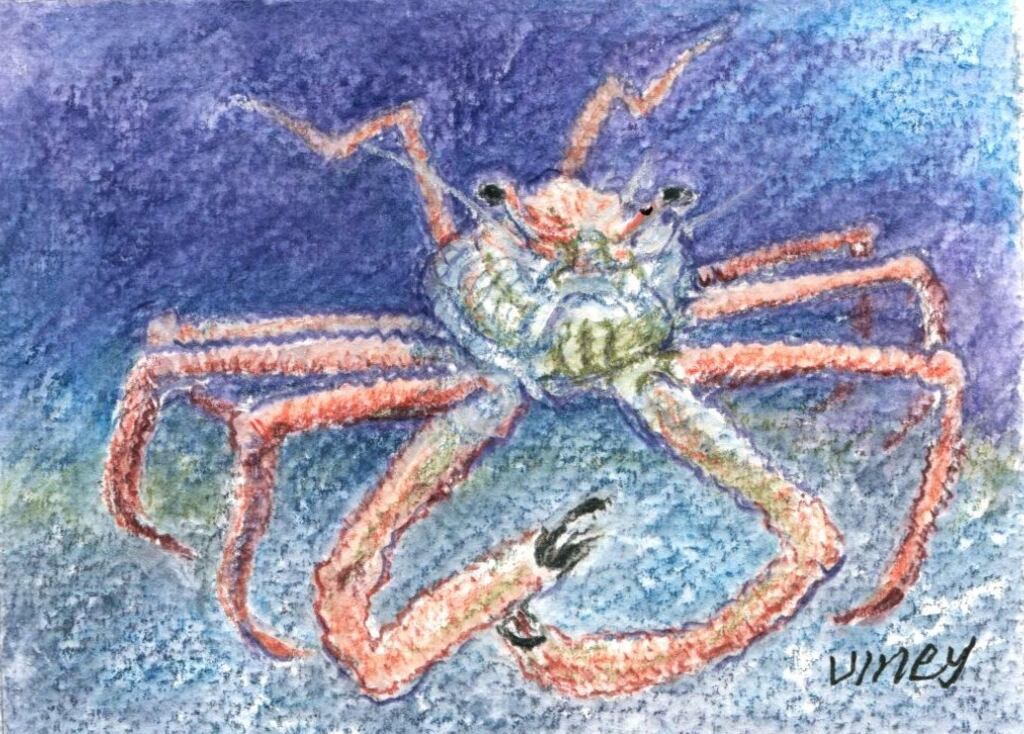The sun tilts towards the mountain’s shoulder in that sculpting, late-September light I’ve always loved. But it’s getting a bit fierce for an old man’s eyes. I may need a cap like Rory McIlroy’s with the shading, cantilevered brim.
Is the sun getting brighter anyway? If diamonds are almost pure carbon, perhaps all those CO2 molecules are scintillating in its path, focusing the light like Fresnel lenses (this is not real science).
What years of sunlight certainly do is bleach the colour out of everything dead. This came home to me from browsing a windowsill in the livingroom, lined with half a lifetime’s gatherings from the tide line. Someone had been dusting it again and rearranging their order, or lack of it, probably not before time.
Many are, indeed, bones, gleaming all the better with their burnishing of light. That suits, for example, the line of dolphin’s vertebrae, like spares from an aircraft assembly shop: I liked the repetition of their graduated, bracing geometry. Separate, vertebral dolphin discs are marvellously carved as if for some elaborate Chinese board game.
READ MORE
At one corner of the sill is the big bottle of seashells, filled in the early excitement of beachcombing. Every shell had some special shape and colour or was different enough to need a name. I could never have too many cowries, for example, like tiny, rolled-up fingerprints.
After decades of morning sun, however, all the pinks and blues have faded. The shells’ little ribs and curves and opercula seem welded together in the bottle as some ancient, stony artefact.
One colour I should be sorry to lose is the vibrant hue of Janthina, the violet sea snail. This remarkable creature travels the ocean surface beneath a little raft of bubbles it has blown from its own mucus. It waits to engage with another ocean drifter, a jellyfish, on which it feeds.
Janthina is classed as a rare find and so it can be in most years. But global warming seems to bring some mass deliveries, like the scores of snails gathered this year from the shores of the Scillies and Cornwall. My fragile three, from the Mullet peninsula, remain in a transparent chocolate box, nursed on cotton wool.
Some toughness amazes. Walking an empty island once with our young daughter, I picked up the tiny, whitened skull of a whimbrel, left, perhaps, from a peregrine’s kill. Its long bill curved down like that of its cousin, the curlew, for probing the sand for food.
Still finely and firmly attached, skull and bill were elegantly balanced and beautiful. And so they still are, decades on, with no special care at all and weighing nothing.
Hovering huge above them and as big as a baby’s head is the prickly, one-eyed carapace that dominates the windowsill, together with a side-leg of 32cm and a knobbly front pincer claw of 50cm.
Some “spider” crab, indeed. Actually it’s most of a deep-water box crab, Paramola cuvieri, salvaged from the strand some years ago. With a claw-span of about a metre, it has been the biggest crab to be found around these islands. A decade ago one was netted by a trawler off Inishbofin and another, caught off Achill, lived for some days in Galway’s Atlantaquarium.
The more familiar, morphologically related, spiny spider crab, Maja brachydactyly, has a carapace and claw-span about half the size. Often prettily studded with barnacles, its prickly shells make tempting beachcomber’s trophies. Several fine ones, indeed, have hung on our walls: most were knocked off eventually, to shatter on the floor.
But Paramola cuvieri may yet be outclassed as a big spidery stranger in our depths. Invasive Species Northern Ireland has launched an alert about the red king crab, Paralithodes camtschaticus, built the same way but twice the size.
This marine monster, weighing more than 10kg, originated in the northern Pacific and Bering seas and was introduced to Russian waters for food. There it soon became invasive, walking quickly on its long legs and preying on anything smaller across substantial reaches of seabed.
It spread south to Norway and by last winter some had reached North Sea waters off Yorkshire and were being fished for local restaurants.
Invasive Species Northern Ireland is clearly apprehensive, but hoping that, at this biogeographical boundary, our waters may be too warm. That may be reckoning without the coming adaptations of climate change.
And someone, at some time soon, may need a bigger windowsill.













